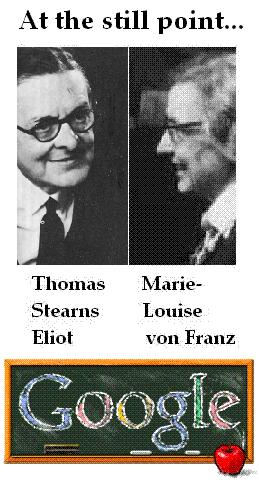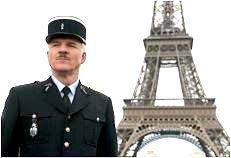As yesterday's Lincoln's Birthday entry indicated, my own
sympathies are not with the "created equal" crowd. Still, the
Catholic Fascism of Franco admirer Andrew Cusack seems somewhat over-the-top. A more thoughtful approach to these matters may be found in a recommendation by Ross Douthat at The American Scene:
Read Eve Tushnet on the virtues of The Man in the High Castle.
Related material: Log24 on Nov. 14, Nov. 15, and Nov. 16, 2003.
Another item of interest from Eve:
"Transubstantiation [is equivalent but not equal to] art (deceptive
accident hides truthful substance), as vs. Plato's condemnation of the
physical & the fictive? (Geo. Steiner)"
Related material:
"The End of Endings"
(excerpt)
by Father Richard John Neuhaus
,
First Things 115 (Aug.-Sept. 2001), 47-56:
"In Grammars of Creation, more
than in his 1989 book Real Presences, Steiner acknowledges that his argument
rests on inescapably Christian foundations. In fact, he has in the past sometimes
written in a strongly anti–Christian vein, while the present book reflects the
influence of, among others, Miri Rubin, whose Corpus Christi: The Eucharist
in Late Medieval Culture is credited in a footnote. Steiner asserts that,
after the Platonisms and Gnosticisms of late antiquity, it is the doctrines
of incarnation and transubstantiation that mark 'the disciplining of Western
syntax and conceptualization' in philosophy and art. 'Every heading met with
in a study of "creation," every nuance of analytic and figural discourse,' he
says, derives from incarnation and transubstantiation, 'concepts utterly alien
to either Judaic or Hellenic perspectives-- though they did, in a sense, arise
from the collisions and commerce between both.'....
The incarnation of God in the Son, the transubstantiation of bread and wine
into his body and blood, are 'a mysterium, an articulated, subtly innervated
attempt to reason the irrational at the very highest levels of intellectual
pressure.' 'Uniquely, perhaps, the hammering out of the teaching of the eucharist
compels Western thought to relate the depth of the unconscious and of pre-history
with speculative abstractions at the boundaries of logic and of linguistic philosophy.'
Later, the 'perhaps' in that claim seems to have disappeared:
At every significant point,
Western philosophies of art and Western poetics draw their secular idiom from
the substratum of Christological debate. Like no other event in our mental history,
the postulate of God's kenosis through Jesus and of the never-ending availability
of the Savior in the wafer and wine of the eucharist, conditions not only the
development of Western art and rhetoric itself, but at a much deeper level,
that of our understanding and reception of the truth of art-- a truth antithetical
to the condemnation of the fictive in Plato.
This truth reaches its unrepeated perfection in Dante, says Steiner. In Dante,
'It rounds in glory the investigation of creativity and creation, of divine
authorship and human poesis, of the concentric spheres of the aesthetic,
the philosophical, and the theological. Now truth and fiction are made one,
now imagination is prayer, and Plato’s exile of the poets refuted.' In the fashionable
critical theories of our day, we witness 'endeavors of the aesthetic to flee
from incarnation.' 'It is the old heresies which revive in the models of absence,
of negation or erasure, of the deferral of meaning in late–twentieth–century
deconstruction. The counter-semantics of the deconstructionist, his refusal
to ascribe a stable significance to the sign, are moves familiar to [an earlier]
negative theology.' Heidegger’s poetics of 'pure immanence' are but one more
attempt 'to liberate our experience of sense and of form from the grip of the
theophanic.' But, Steiner suggests, attempted flights from the reality of Corpus
Christi will not carry the day. 'Two millennia are only a brief moment.'














Recent Comments